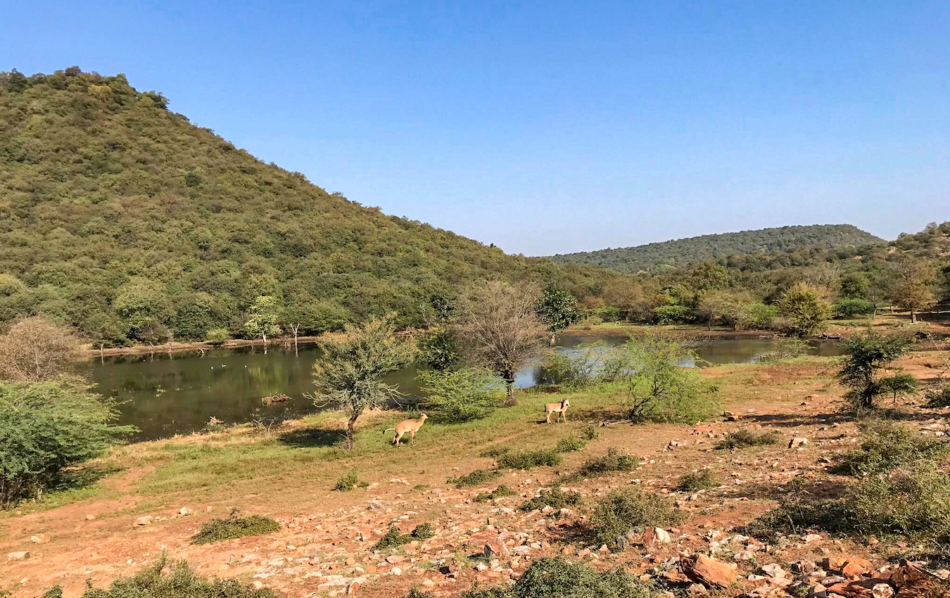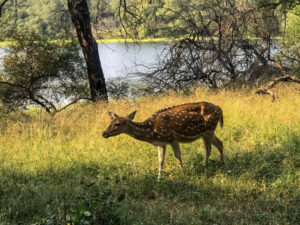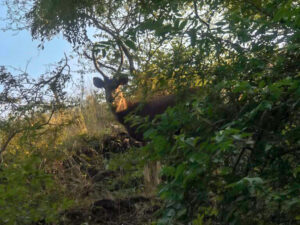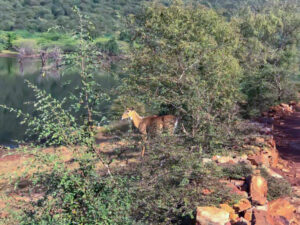Ranthambore Tiger Reserve: In perpetual search of Sher Khan
As the jeep’s roar rumbles to a stop, the rustic sounds of the jungle take over. Straining our ears, we hear the distant sounds of squawking birds and chattering monkeys and wait, with bated breath, for the king of the Indian jungles to appear.
There are two main ways to track and spot tigers on a wildlife safari, explains our Ranthambore tour guide Mahavir Singh. An alarm call by the forest’s prey animals, such as the Langur monkeys, deer and ground dwelling birds, like peacocks and the red jungle fowl. Making up for a highly intelligent animal that treads silently with the help of its soft padded paws, calls ring out as a warning that a tiger is prowling in the vicinity.
“Or you can spot pugmarks. Tigers like to walk on open trails to avoid foot injuries from thorns, so when we see fresh pugmarks on the jungle roads and we follow the prints,” Singh tells Media India Group. He also points out some tiger faeces and explains that since tigers are solitary animals and highly territorial, they mark their territories by spray marking trees with urine or defecate in the middle or side of pathway and later scrape the ground, so the “scat” is visible to rival tigers.
When there is no sight of a tiger even after around 15 minutes, the jeep trudges on over the rocky terrain. The park’s numerous naturalists and guides with their own jeeps or canters of tourists often stop and discuss previous sightings and tactics along the way, hoping to see a glimpse of the elusive Sher Khan within the designated four hours that a safari lasts.
Ranthambore National Park, located in the Sawai Madhopur district of southeastern Rajasthan, about 130 km from Jaipur and surrounded by Aravalli and Vindhyanchal mountain ranges, is one of the largest and most renowned national parks in North India. Once the famous hunting grounds of Rajasthani Maharajas, it is now a major wildlife tourist attraction drawing many wildlife photographers and nature and animal lovers. Spread over 1,334 km2, the park has ten eco-tourism zones for birdwatching and tiger-sighting.
The most popular tourist activity is to rent spots in a Canter or jeep for a four hour safari, either in the morning or evening, costing about INR 1600 for one seat or INR 9600 for an entire six-seater open top jeep. The first afternoon, we had come to Zone 10, suggested by the safari operator as just that morning, tourists had luckily spotted a tigress and two of her cubs prowling around. It was a fruitless effort, however, and we returned disappointed yet exhilarated by the safari. Such ‘empty’ safaris are no longer rare at Ranthambore, with genuine tiger sightings few and far in between. Not only does the dense jungle make them so hard to spot, numbers of tigers have been dwindling. While the official tiger count stands at around 70, some guides say a couple of tigers are unaccounted for and have been missing for almost two years, with camera traps that are set up around the forest unable to capture any pictures of them.
Although the tiger population has been on the rise since 2014, when there were only 45 tigers, this has also lead to an increase in poaching, with incidents of poachers being caught on the real time cameras and tigers seen with wire snares around their necks.
Moreover, the Forest Department had determined that the park’s capacity was fit for around 40 tigers only, and the decreased space for these solitary animals has resulted in stress and a higher number of tiger clashes and attacks
“Once we saw a tiger on a safari with huge bloody gash marks across his body. So we had to assume the other one was dead. I’ve worked here for 20 years now, and have seen some of them be born in front of my eyes,” says Singh.
Many of the iconic Ranthambore tigers, favourites of wildlife photographers and bloggers, are no longer at the park, such as the tigress Machali who died in 2016 and T-24 (Ustad) who was shifted to a zoo after being involved in several fatal attacks on staff.
Guides say the best time to visit are the months of April and May, when the intense heat makes the animals come out of the dense thrushes for a sip of water. But even without a tiger sighting, the park is still worth a visit for nature lovers and photographers who want to see animals in the wild, away from the man-made ambience of zoos. Along the way, we saw the large Sambar deers, incidentally a tiger’s favourite meal, spotted deer, rare birds like the Oriental Honey Buzzard, a marsh crocodile lying lazily near one of the several water bodies, and some Nilgai, the largest Asian antelope and fascinating for its looks of a cross between a horse and a deer.
Tourists also have endless options for accommodations and food, with nearby hotels such as The Oberoi, Tigress Resort & Spa and Pugmark Resort. Most provide delicious meals within the accommodation itself, but visitors can also go into town to pick up souvenirs or authentic Rajasthani handicrafts and garments. Additionally, a visit to the commanding 10th-century Ranthambore Fort, which sits on a hilltop, and the Ganesh Mandir temple, are great additions to your trip.
The tourism industry at the park has also been slowly recovering since the Covid-19 pandemic, when both the park and hotels remained closed from June, putting around 70 pc of staff and guides out of work. Tourists are coming back in droves, with most hotels saying there has been about a 30-40 pc recovery since the lockdown and second wave of the pandemic that had struck in April 2021.
Although this time, we were not able to see the King of the Jungle, like many who fell in love with its wild charm, I hope to return again for yet another attempt at Ranthambore National Park.














